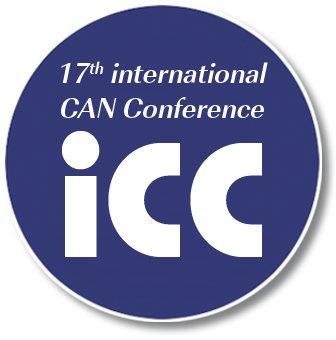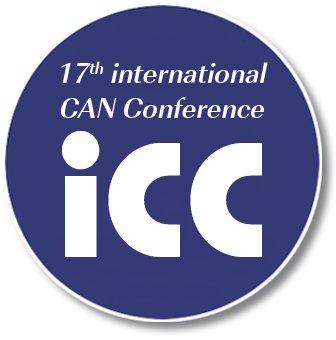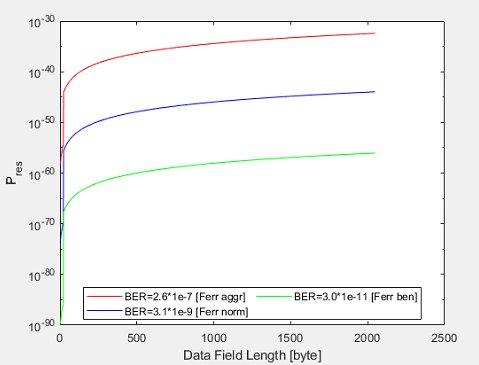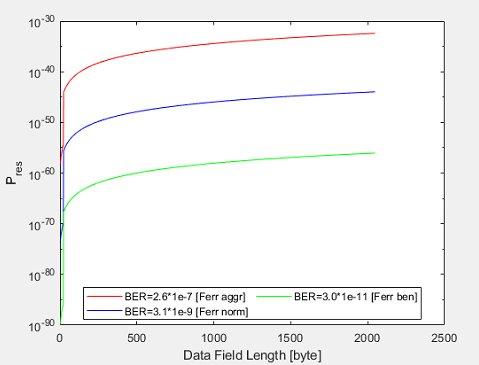-
CANopen profile for weighing devices
The nonprofit CiA (CAN in Automation) association has released version 2.0.0 of the CiA 461 profile specification series. This series comprises four parts specifying the CANopen interfaces of weighing devices. A simple CANopen weighing network consists of load cells, compensation sensors, scales and HMIs (human machine interface) or indicators. Such a network can comprise several devices of the same kind. Load cells and scales feature optionally locally or remotely connected compensation sensors. Scales provide optionally locally or remotely connected indicators. These devices are controlled and operated by a weighing process control entity located typically in the scale. This device supports also CANopen manager capabilities (NMT producer, configuration manager, and error…
-
CANopen-Profil für Energiemanagementsysteme aktualisiert
Der eingetragene Verein CiA (CAN in Automation) hat neue Dokumente der Spezifikationsserie CiA 454 herausgegeben. Teil 3 spezifiziert die PDO-Kommunikation (process data object). PDOs sind CANopen-Nachrichten, die Prozessdaten enthalten. Es ist die Version 3.0.0, die neue PDOs für Mensch-Maschine-Interface-Einheiten standardisiert. Diese Einheiten sind funktionell im neuen Teil 9 beschrieben, der als Version 1.0.0 veröffentlicht ist. Ebenfalls in der Version 1.0.0 ist der Teil 7 erhältlich, der die Funktionen der Antriebseinheit spezifiziert. Die Dokumente der Reihe CiA 454 werden informativ von einer IEC-Norm für Leicht-Elektro-Fahrzeuge als Implementierungsoption referenziert. Das Anwendungsprofil CiA 454 umfasst 14 Teile und ist nicht nur auf elektrische Leichtfahrzeuge begrenzt. Es ist ein generisches CANopen-Profil für Energiemanagementsysteme. CANopen…
-
CANopen energy management system profile updated
The nonprofit CiA (CAN in Automation) association has released new documents of the CiA 454 CANopen application profile series for energy management systems. Part 3 specifying the PDO (process data object) communication has been updated. Version 3.0.0 introduces new PDOs for the HMI (human machine interface) unit. The HMI unit is specified in Part 9, which has been released as version 1.0.0. Also, the Part 7 has been finalized and is available as Draft Specification Proposal (CiA 454-7). It specifies the drive control unit. These documents will be referenced informatively by an IEC standard as an implementation option for light electric vehicles (LEVs). The complete application profile specification comprises 14…
-
17th international CAN Conference with supporting program
Originally, the iCC was planned as two-day conference in Baden-Baden (Germany). However, due to the Covid-19 pandemic, it was postponed. In February, CiA has re-scheduled the conference. Read details here. The iCC now takes place from June 14 to June 17 as an online event. The motto is “From Classical CAN via CAN FD to CAN XL”. Besides the regular iCC conference program, there is also a supporting program. The CiA open-house session comprises several open CiA technical meetings on June 15; the details are here. These open meetings give members and non-members the opportunity to have an inside look to some CiA technical groups. Additionally, CiA has scheduled some…
-
17. internationale CAN-Konferenz mit Zusatzprogramm
Ursprünglich war die iCC als zweitägige Konferenz in Baden-Baden geplant. Aufgrund der Covid-19-Pandemie, wurde der Termin jedoch verschoben. Im Februar hat CiA die Konferenz neu terminiert. Details finden Sie hier. Die iCC findet nun vom 14. bis 17. Juni als Online-Veranstaltung statt. Das Motto lautet „Vom klassischen CAN über CAN FD zu CAN XL“. Neben dem iCC-Konferenzprogramm gibt es auch ein Zusatzprogramm. Dieses Zusatzprogramm umfasst mehrere offene, technische CiA-Meetings am 15. Juni; Details finden Sie hier. Diese „offenen Treffen“ geben Mitgliedern und Nichtmitgliedern die Möglichkeit, einmalig an ausgewählten technischen CiA-Gruppen teilzunehmen. Darüber hinaus hat der CiA mehrere Webinare für den 16. und 17. Juni geplant; die Details finden Sie hier.…
-
CiA-Spezifikation für Klassisches CAN und CAN FD
Der eingetragene Verein CAN in Automation (CiA) hat die Spezifikation CiA 110 für Gleichtaktdrosseln in CAN-Netzwerken als DSP (Draft Specification Proposal) herausgegeben Elektromagnetische Emissionen von Steuergeräten einschließlich von CAN-Transceivern können mithilfe der Gleichtaktdrosseln gefiltert werden. Dies limitiert das unerwünschte hochfrequente Rauschen auf den CAN-Leitungen. Ein anderer Grund für die Nutzung der Gleichtaktdrossel ist die Verbesserung der Empfindlichkeit (Immunität) des CAN-Transceivers gegenüber elektromagnetischen Störungen auf dem CAN-Netzwerk. Während diese Auswirkungen der Gleichtaktdrossel vorteilhaft sind, können jedoch auch unerwartete Effekte auftreten. Die EMV-Empfindlichkeit (elektromagnetische Verträglichkeit) kann in manchen Frequenzbereichen abnehmen, die Integrität des Bussignals kann sich verschlechtern und es können sehr hohe transiente Spannungen entstehen. Im ungünstigsten Fall kann es zu einer…
-
CiA specification for Classical CAN and CAN FD
The nonprofit CiA (CAN in Automation) association has released the CiA 110 CAN common mode choke specification as Draft Specification Proposal (DSP). Electromagnetic emission from a device through the CAN transceiver can be filtered by means of common mode chokes, thus limiting unwanted high-frequency noise on the CAN network lines. Another reason for using a common mode choke is attempting to improve the susceptibility (immunity) of the CAN transceiver to electromagnetic disturbances on the CAN network. While the above-mentioned effects of the common mode choke are beneficial, unexpected results can occur under certain conditions. EMC (electromagnetic compatibility) susceptibility can be degraded in some frequency ranges, bus-signal integrity can be worsened,…
-
Evaluation of the CAN XL error detection capabilities
The Institute of Computer-Architecture and System-programming (ICAS) of the University of Kassel has examined the CAN XL data link layer protocol specified in CiA 610-1. More than half of a year, Prof. Dr. Josef Börcsök and his team investigated in the evaluation of the error detection mechanisms provided by the CAN XL protocol. The final research report comprises a qualitative evaluation of the residual error probability, too. CAN in Automation (CiA) members have developed the CAN XL data link layer specification. It is available in the CiA 610-1 CAN XL data link layer and physical signaling document. The data link layer (DLL), also known as layer-2 in the Open System…
-
Bewertung der CAN-XL-Fehlererkennung
Das Institut für Computerarchitektur und Systemprogrammierung (ICAS) der Universität Kassel, hat die CAN-XL-Datenverbindungsschicht untersucht, die in CiA 610-1 spezifiziert ist. Über ein halbes Jahr, haben Prof. Dr. Josef Börcsök und sein Team, die Fehlererkennungsmechanismen des CAN XL-Protokolls evaluiert. Der abschließende Forschungsbericht, enthält auch eine qualitative Bewertung der Restfehlerwahrscheinlichkeit. Mitglieder von CAN in Automation (CiA) haben die CAN-XL entwickelt. Diese dritte Generation des CAN-Protokolls ist im Dokument CiA 610-1 (CAN XL data link layer and physical coding sub-layer requirements) spezifiziert. Die Datenverbindungsschicht (engl. data link layer, DLL) ist im siebenschichtigen OSI-Modell der zweite Layer. Sie bietet die funktionalen und prozeduralen Mittel zur Übertragung von Frames zwischen Netzwerkeinheiten (Knoten) und sie erkennt…
-
CiA technology days 2021 in various languages
The nonprofit users’ and manufacturers’ group CAN in Automation (CiA) organizes in 2021 technology days in various languages. Topics include J1939, CANopen FD, and others. In the next time, they are held online. There are technology days with presentation languages in English, Chinese, or Russian. All of them are free of charge. After registration, you receive the necessary link for participating in the Zoom-based CiA technology day. They are recorded and uploaded to the Youtube channel. The technology days address decision makers and managing development engineers, said the organization. They provide a general overview on CiA specification projects and international standardization activities. Some of them are limited to special topics…






